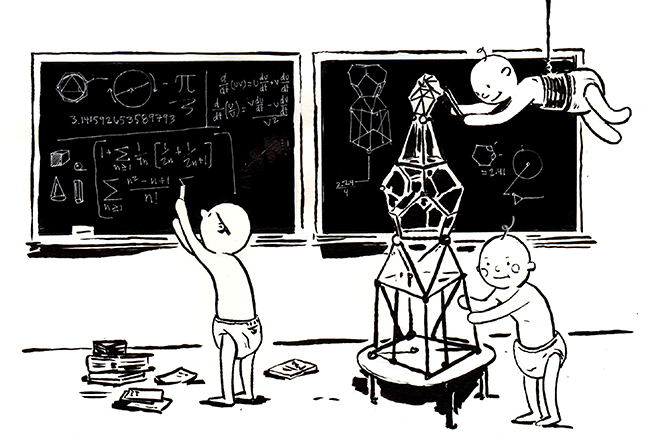ZEITGUIDE TO SKILLS YOU NEED

ZEITGUIDE “EDUCATION” IMAGE BY KRISTOFER PORTER
STEM or STEAM?
The collision of high unemployment, a collective student debt of $1.1 trillion, and a shortage of workers trained for tech careers has blown up into a full-fledged panic about science, technology, engineering and math, what we now call STEM education. Why aren’t our universities churning out enough grads ready to create code and crunch data?
Some of Silicon Valley’s top CEOs—Jack Dorsey, Reed Hastings and Marc Benioff—just petitioned California to add programs to teach computer science in public schools. The Bureau of Labor Statistics spring report, titled “STEM 101: Intro to Tomorrow’s Jobs,” asserted that STEM jobs are “the future of the economy” and the STEM industry is projected to grow about 13% between 2012 and 2022, which is faster than the rate of all occupation growth.
But while STEM may be the Zeitgeist conversation right now in both education and human resources circles, we needn’t throw out the arts and humanities. In fact, they are vital.
Turns out there are champions for this point of view, too, beyond just op-ed columnists like The New York Times’ Frank Bruni (His column just this week is entitled, “Read, Kids, Read”). It’s called STEAM—adding an A for Arts and Design.
The STEM to STEAM initiative, spearheaded by the Rhode Island School of Design (RISD), is sparking a conversation about how valuable creativity and innovation are to our economy—and how those qualities are nurtured by arts education. A STEAM-centered education also develops skills in collaboration, communication, and dynamic problem-solving.
“Pairing the analytical nature of STEM with the creative potential of art or music will enable our students to push boundaries and challenge the status quo,” says Rep. Suzanne Bonamici (D-OR), who co-chairs the Congressional STEAM Caucus. “A well-rounded education leads to a workforce of adaptive, creative thinkers who will help us compete in a global marketplace.”
That’s what CEOs say they need when hiring. A survey of 318 CEOs by the Association of American Colleges and Universities found that 74 percent would recommend a liberal arts education to prepare young people for the 21st century economy. “It’s easier to sell math and science as a political selling point with the current economic moment,” one college professor told CNBC. “That’s nothing new, though the data suggests it’s not necessarily more relevant for employers.”
So what’s the undeclared undergrad to do? We asked ZEITGUIDE friend Victoria Gray, who runs an inspiring program called Adventures of the Mind, designed to help high-potential teens find their calling. At each of her “summits” (and her next one is on June 15th) high schoolers from all over the country get to meet luminaries from all fields—Nobel-winning scientists and Pulitzer-winning writers. She dismissed the idea that we might emphasize one over the other.
“STEM? STEAM? They are just skills that enable people to achieve. But jobs requires more than just skills,” she said. Real success in the world requires something else. “Passion. Grit. And a sense of adventure.”
The 21st century economy will have jobs for those steeped in technology and those who love the humanities. And those who have a touch of both? They might be the ones creating jobs.
I just had dinner with Danielle Zloto, a former colleague from Imagine Entertainment who now works for Airbnb co-founder Brian Chesky. Darling of the tech world, right? And a company that’s now worth $10 billion? He studied design at RISD.
Keep Learning,
Brad Grossman
Creator, ZEITGUIDE
Founder, Grossman & Partners
For more on how the conversation about Education is evolving as both culture and business are changing, get ZEITGUIDE 2014 here.
